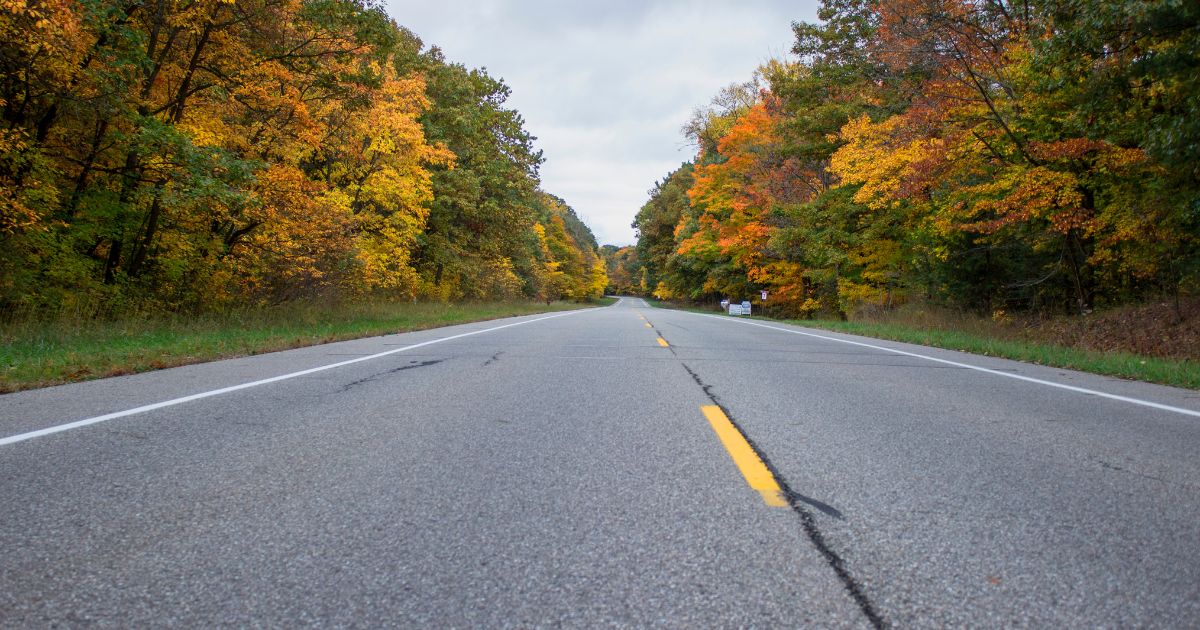What Are Fall Driving Safety Tips?

Each change of season brings new road conditions to adjust to and safe driving concerns to account for, and autumn is no exception. From temperature fluctuations to increased wildlife activity, drivers should prepare to adjust their highway and rural driving habits from September through December.
To reduce your risk of getting involved in a car accident, keep the following safer driving practices and tips in mind. Each one offers a chance for you to lessen your likelihood of experiencing the stress, damage, and potentially devastating injury that can come after being in a collision.
Drive Cautiously in Fog
A wide difference between nighttime and daytime temperatures starts to become more apparent in the fall. In the evening, temperatures can drop rapidly near the freezing mark. After daybreak, they rise quickly to more moderate levels. This back-and-forth causes a familiar, expected phenomenon: fog.
When you are behind the wheel, fog can obscure other drivers and hazards in the road. Under extremely foggy conditions, you may only be able to see a few feet in front of you, which makes it imperative that you slow down. Otherwise, you could wind up hitting the car in front of you, which would be a classic rear-end crash.
Injuries common to rear-end crashes include whiplash, concussion, and fractured bones. Going below the speed limit in foggy weather provides added protection for you and your passengers. Be sure to keep your headlights on but avoid using your high beams. The light from high beams reflects off fog and actually makes it more difficult for you to spot whatever is ahead.
Expect the Unexpected from Fallen Leaves
Many types of Georgia trees release their brilliantly colored leaves in the fall, which often end up on roads. Though dry leaves tend to blow away and not be problematic to drivers, wet leaves can create slick conditions.
It can be difficult to judge if the leaves you see are dry or wet. Many times, wet leaves become covered by newly fallen dry ones. If you are going too fast for the local conditions, you run the risk of skidding and sliding. Though modern cars are equipped with anti-lock brakes, you can never assume that your brakes will always allow you to regain traction.
As with fog, your best option is to slow down when you are driving over piles of leaves. In the case of residential community driving, avoid parking on what appear to be normal leaf piles. Children and animals may be tempted to hide or play in large leaf piles along the street.
Remember Trick-or-Treat Nights
Halloween is one of the first major Autumn holidays. Though not every family or neighborhood celebrates Halloween with trick-or-treating, many do. Trick-or-treat nights are not always held on October 31, and can vary depending on the day of the week that Halloween falls, or on inclement weather.
On and around Halloween, be prepared to slow down for trick-or-treaters. Ideally, children participating in Halloween evening walks will be dressed in light colors and wear neon or carry lights to make them easier to spot. However, not all kids follow this rule. You may have to drive very slowly around areas where children are likely to be trick or treating.
What if you are going to a Halloween party meant for the adult crowd? In that case, avoid drinking any alcohol unless you are not planning to call a cab or designate a sober driver. Many intoxicated drivers who get into car accidents do not realize how incapacitated they are until it is too late. As the saying goes, “buzzed driving is drunk driving.” Take advantage of ridesharing or let a designated driver take you home after you have had alcoholic drinks.
Watch Out for Darting Deer and Other Animals
Deer activity picks up in the fall due to mating season. This means you may encounter deer anywhere, including on highways. Deer have been known to find their way into urban communities, so always stay alert for their presence.
It can be tough to predict if a deer is going to run out in front of your car. The best way to be ready is to follow posted speed limits. The more control you have over your car speed, the faster you can stop to avoid hitting a deer or other creature.
What should you do if you end up in a deer-related car accident? Pull over to the side of the road if you can. Whether or not the deer is still alive, avoid any contact with it. Call 911 immediately and stay calm while you wait for first responders to arrive. Either on the scene or afterward, see a doctor to find out if you need treatment for any injuries.
Take Young Drivers Out for Extra Driving Practice
Your teenager may have earned a driver’s license over the summer. Countless teens do. Although they passed their test during the warmer weather, they may have limited driving experience during the fall. To fix this issue, take your teen driver out for extra fall driving practice.
For example, you might want to map out a few trips on both highways and rural roads at different times of the day. While acting as a passenger in the car, point out things like the fallen leaves or potential wildlife crossings to your teen. Talk about some safe driving tips that you like to keep in mind or that have helped you become a more confident, safer driver.
Newer drivers may have the legal authority to drive, but they lack your years of experience behind the wheel. By taking a little more time with them, you can improve their skills as well as protect them from getting into a preventable car accident.
Check Your Tire Pressure
If you have a teen or new driver in the house, fall is a good time to conduct a tire experiment. Each day at around the same time, check your tire pressure. You may discover that it can change rapidly. This is due to temperature shifts.
The pressure inside your tires is sensitive to how hot or cold it is outside. This means that you need to ensure your tires are properly inflated regularly. Make this a weekly habit, particularly when the temperatures begin to get very chilly overnight and then spike during the day.
Staying on top of your tire pressure helps avoid the possibility of a blowout-caused car accident. During a tire blowout, you can expect to have trouble controlling the direction of your car. This is why blowouts can cause a lot of damage and injuries as the car skids into objects like guardrails, sound barriers, or other vehicles.
Know that Snow Squalls Can Be Unpredictable
The longer you drive, the more likely you are to encounter unpredictable weather like sudden snow squalls or freak snowstorms, which can occur in the fall. All it takes is the right combination of precipitation and temperature to create a snow-linked road hazard.
Driving in a sudden white-out can be very difficult, even if you are a seasoned driver. Visibility rates can drop in just a few minutes. Sometimes, your best course of action may be to find a safe spot to pull over and ride out the snow. Other times, you may have to keep moving forward. In this situation, always put on your four-way emergency flashers. The flashers are meant to alert anyone driving around you that you are traveling slowly.
If you find yourself in a skid or slide on freshly-packed snow, experts recommend that you turn in the direction of the skid. Taking this action makes the car stop sooner, giving you the opportunity to regain control over the movement of your vehicle and avoid a crash.
Prepare for Sun Glare
You can expect fewer hours of sunlight each day as you move closer toward winter. Even before changing the clocks for Daylight Savings Time in November, you may discover that you are facing the sun during your morning or evening commute.
Though sunglasses and visors can help, intense sun glare can make it difficult to see the road clearly. Many car collisions happen because drivers cannot get a good look at the road due to glare off their windshields.
One way to bypass sun glare is to leave the house a little earlier or later for work or school. Fifteen minutes can make all the difference.
What If an Accident Happens to a Proactive Driver?
Car accidents still happen, even to the most proactive, practical, and pragmatic drivers. If you or someone in your family is injured and you need help recovering damages, speaking with a car accident lawyer can help. You are under no obligation to hire a legal representative but may find it worth your while to get a better sense of your rights as an accident survivor.
Arrange a Consultation with a Springfield Car Accident Lawyer at Kicklighter Law After Being Hurt in an Autumn Highway Crash
Being hurt in a car accident can mean high medical bills and lost wages. Set up a consultation with a Springfield car accident lawyer from Kicklighter Law to get advice on how to recover damages. Call us at 912-461-6309 or fill out our online form to schedule a meeting at our office in Springfield, Georgia. Our firm serves clients in and throughout locations including Effingham County.
